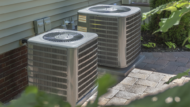If you live in California, you are well aware of the state’s beautiful weather and stunning landscapes. However, with the constant threat of seismic activity, preparing your home to ensure your family’s safety and prevent potential damage is important. This article will discuss the causes of earthquakes in California, a brief history of notable earthquakes, and ways to prepare your home for earthquake risks in Southern California.
Causes for Earthquakes in California
California sits on the boundary of two tectonic plates, the Pacific and North American plates. The movement of these plates causes stress to build up in the Earth’s crust, which results in earthquakes. The state is also positioned directly atop The San Andreas Fault; the fault is where the two plates meet. When these plates grind against each other, it causes tremors throughout the ground.
Brief History of Earthquakes in California
 Since the earliest recorded earthquake in California in 1769, the state has experienced thousands of seismic events. Some of the most notable earthquakes in California’s history include:
Since the earliest recorded earthquake in California in 1769, the state has experienced thousands of seismic events. Some of the most notable earthquakes in California’s history include:
- The San Francisco Earthquake of 1906: On April 18, 1906, the earthquake had a magnitude of 7.8 that caused widespread damage and fires in San Francisco, resulting in an estimated 3,000 deaths.
- The Northridge Earthquake of 1994: On January 17, 1994, the earthquake had a magnitude of 6.7 and caused significant damage in the LA area, resulting in 57 deaths, thousands of injuries, and billions in damage.
- The Loma Prieta Earthquake of 1989: On October 17, 1989, the earthquake had a magnitude of 6.9 and struck the San Francisco Bay Area. It resulted in 63 deaths, thousands of injuries, and billions in damage.
Ways to Prepare for an Earthquake
Given California’s history of earthquakes, it is important for residents to take steps to prepare for them. One of the most important steps is to have an emergency plan in place. This plan should include information on what to do during and after an earthquake and a list of emergency contacts and supplies. Here are the best ways to prepare your home for Southern California earthquake risks:
Seismic Retrofitting
Seismic retrofitting is the process of reinforcing a building’s structure to make it more resistant to seismic activity. This can include adding reinforcement to walls, foundations, and roofs. If implemented properly, seismic retrofitting can reduce the risk of damage to your home by up to 60%.
Foundation Bolting
Foundation bolting is a type of seismic retrofitting that involves bolting the wooden framing of a home to its concrete foundation. Securing the home can prevent it from shifting or collapsing during an earthquake. With bolting, the risk of damage to a home is reduced by up to 25%.
Bracing Water Heaters
During an earthquake, unbraced water heaters can tip over and cause fires or gas leaks. Bracing your water heater can prevent these potential hazards and reduce the risk of damage to your home by up to 4%.
Gas Shutoff Valves
Gas shutoff valves automatically discontinue the gas supply to your home in the event of an earthquake. This can prevent gas leaks and reduce the risk of fires. Installing this valve can reduce the risk of damage to your home by up to 3%.
Secure Heavy Furniture
During an earthquake, heavy furniture can tip over and cause injuries or damage to your home. It is important to secure heavy furniture to the wall using brackets or straps to prevent this. Tips include: connecting bookshelves together, ensuring anchoring screws penetrate studs, and keeping the top of surfaces near beds.
Secure Heavy Furniture
Heavy furniture can seriously threaten your family’s safety during an earthquake. In case of an earthquake, heavy furniture can tip over and cause injuries or damage to your home. Therefore, securing heavy furniture to the wall using brackets or straps is crucial to prevent these accidents. The best tips for securing heavy furniture include connecting bookshelves together, making sure anchoring screws penetrate studs, and keeping the top of surfaces near beds or desks clear of heavy items.
Emergency Supplies
In addition to structural reinforcement and safety measures, it is important to have emergency supplies on hand to prepare for a possible earthquake. These supplies can include water, non-perishable food, first aid kits, flashlights, and batteries. Having enough emergency supplies to last you and your family for about three days is essential. You can find a list of necessities to pack in an emergency supply kit on the American Red Cross website.
Insurance
Earthquake insurance is an additional coverage option that can help cover the cost of repairs and rebuilding in the event of an earthquake. However, according to the California Department of Insurance, only 10% of Californians have earthquake insurance. With nearly 40 million people living in California, that’s a mere four million people who are insured. Therefore, reviewing your insurance policy and considering adding earthquake coverage if it’s not already included is essential.
Conduct an Overall Home Safety Assessment
Conducting a home safety assessment can help identify potential hazards and areas of vulnerability in your home. This is essentially a compilation of recommendations listed earlier. Safety assessments include identifying unsecured items, checking the stability of shelves and bookcases, and evaluating the condition of your home’s foundation. A home safety assessment will help you determine the areas of your home that need attention, so you can take the necessary steps to reinforce them.
Install a Seismic Gas Shutoff Valve
Besides automatic gas shutoff valves, homeowners can also install seismic gas shutoff valves. These valves can detect seismic activity and automatically shut off gas to the home, reducing the risk of fires and explosions. The automatic setting of these shutoff valves also reduces the risk of homeowner error. If you’re unsure how to install a seismic gas shutoff valve, consider hiring a licensed professional to do the installation.
Earthquakes are an unfortunate reality of living in the Los Angeles, California area, but you can take steps to prepare your home and keep your family safe. An emergency plan and properly securing your home’s structure and contents are essential to minimize the risks of damage and injury. Additionally, having an emergency supply kit and reviewing your insurance policy are crucial steps. By conducting an overall home safety assessment, you can identify potential hazards and areas of vulnerability in your home and take steps to reinforce them. With proper preparation, you can increase your chances of staying safe and minimizing damage during an earthquake.







